Scroll through the photo to see the before and after treatment.
↔
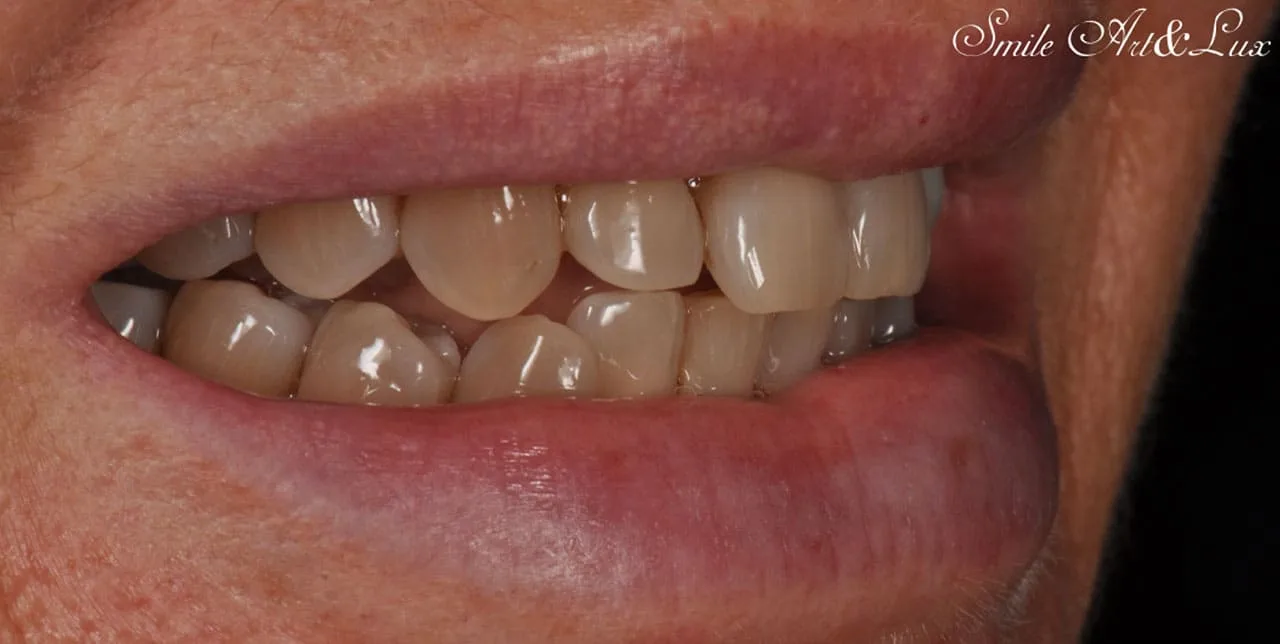
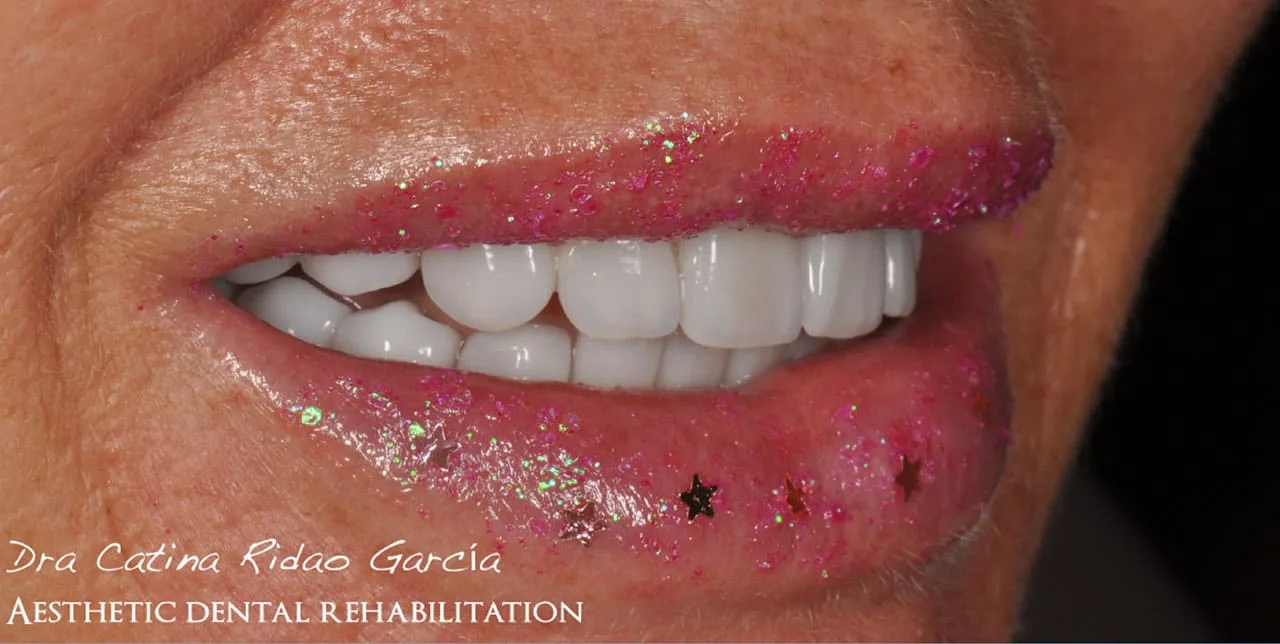
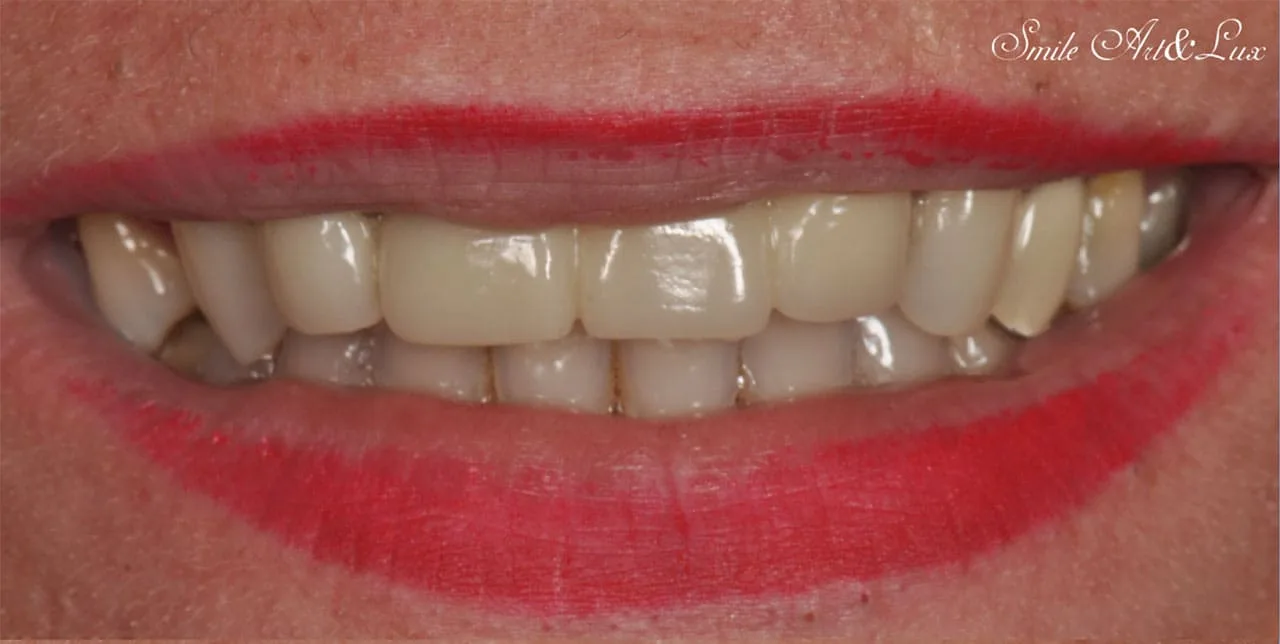
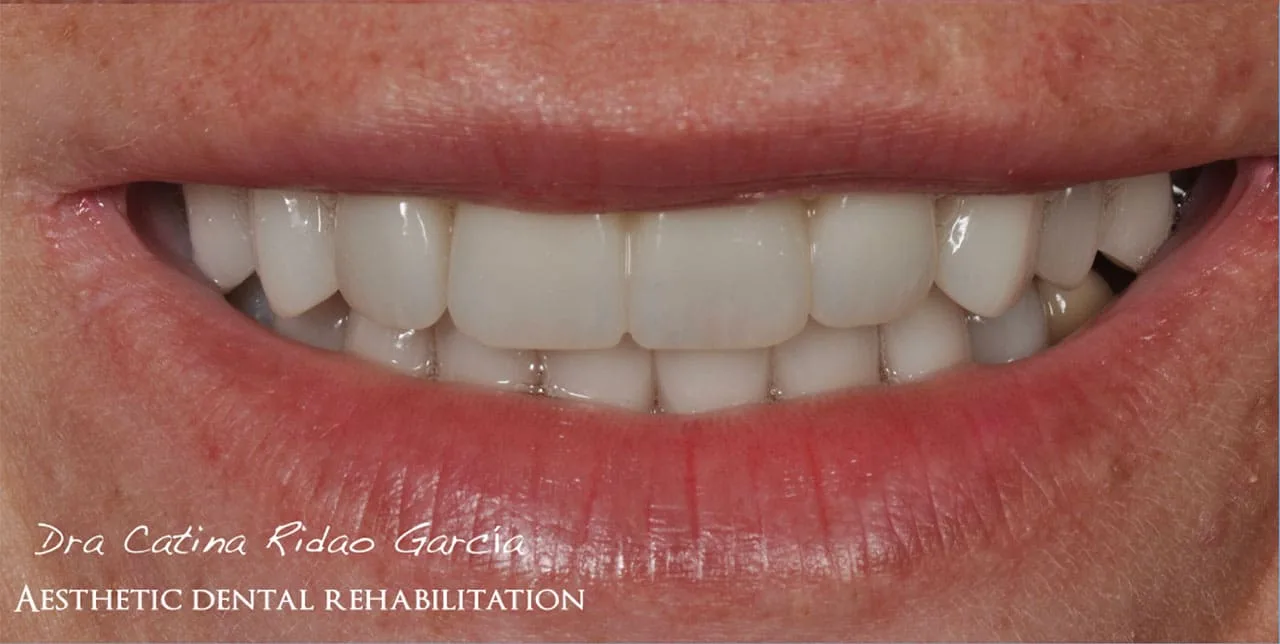

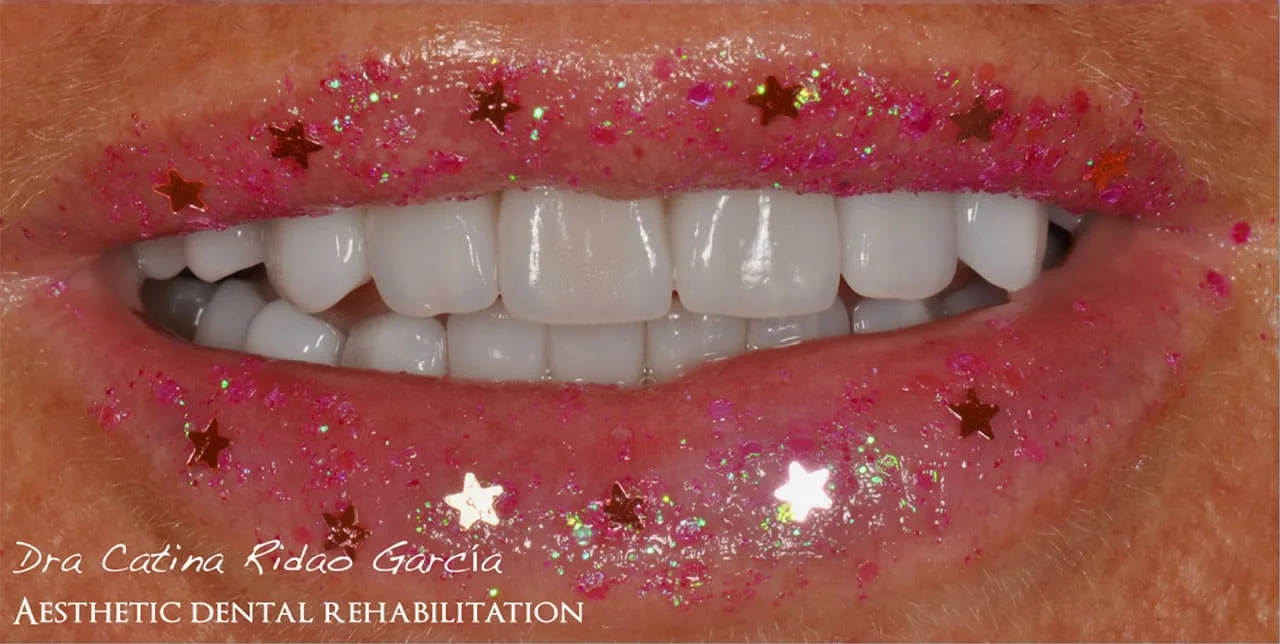
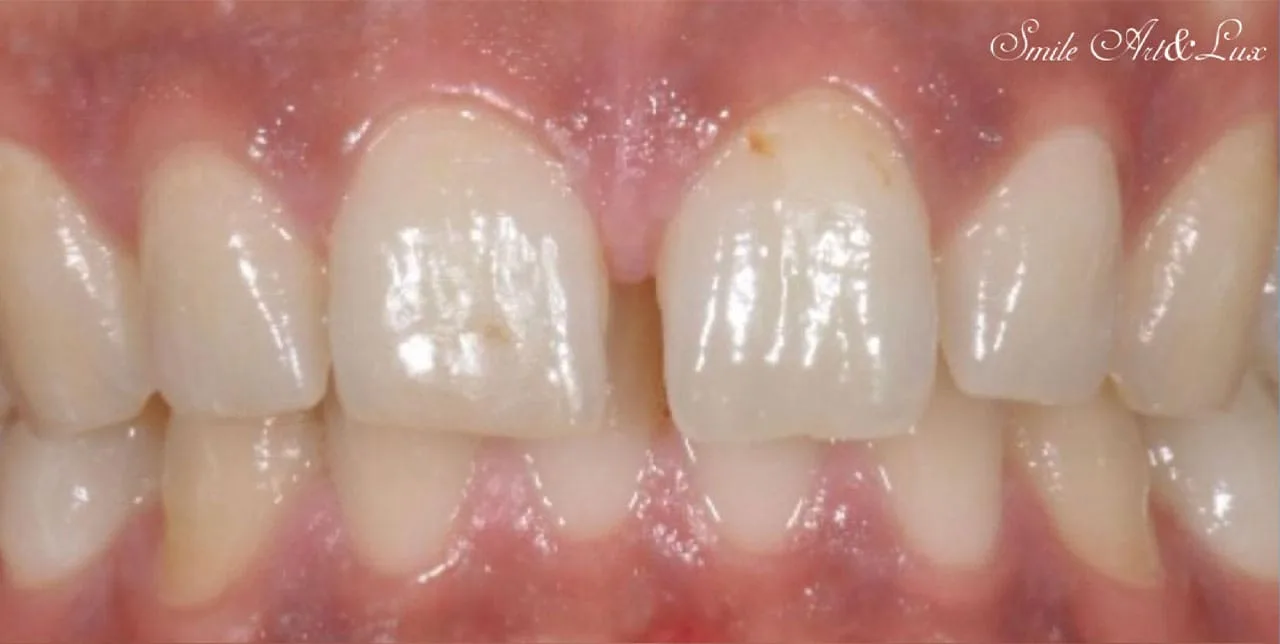
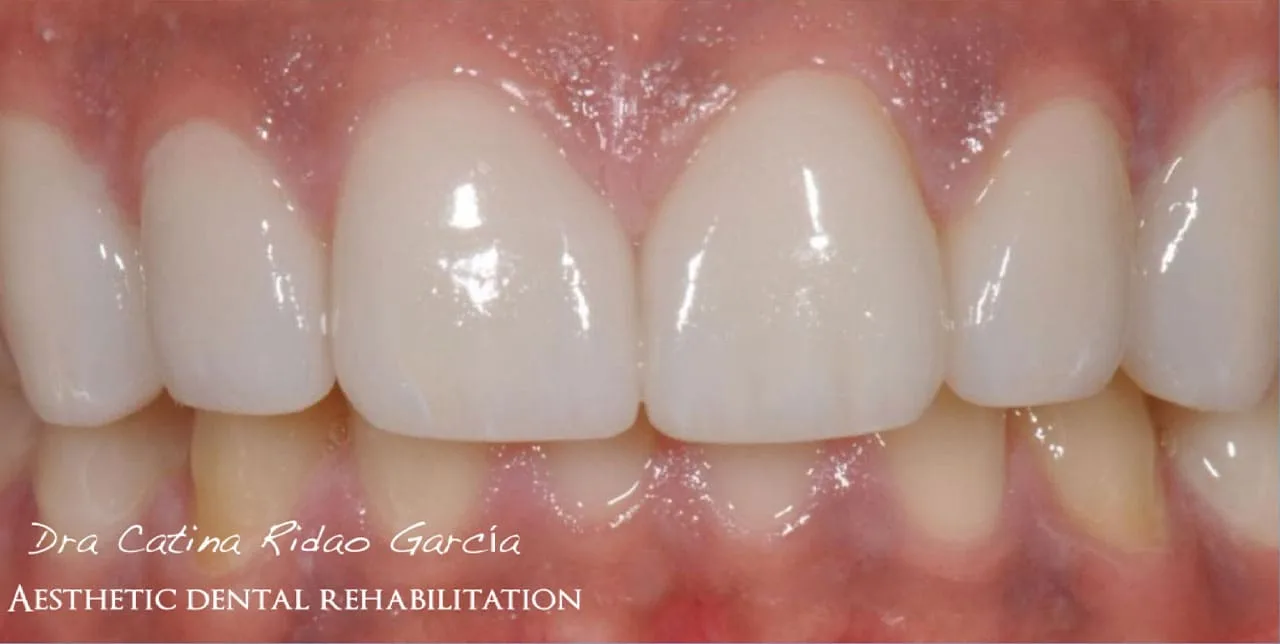

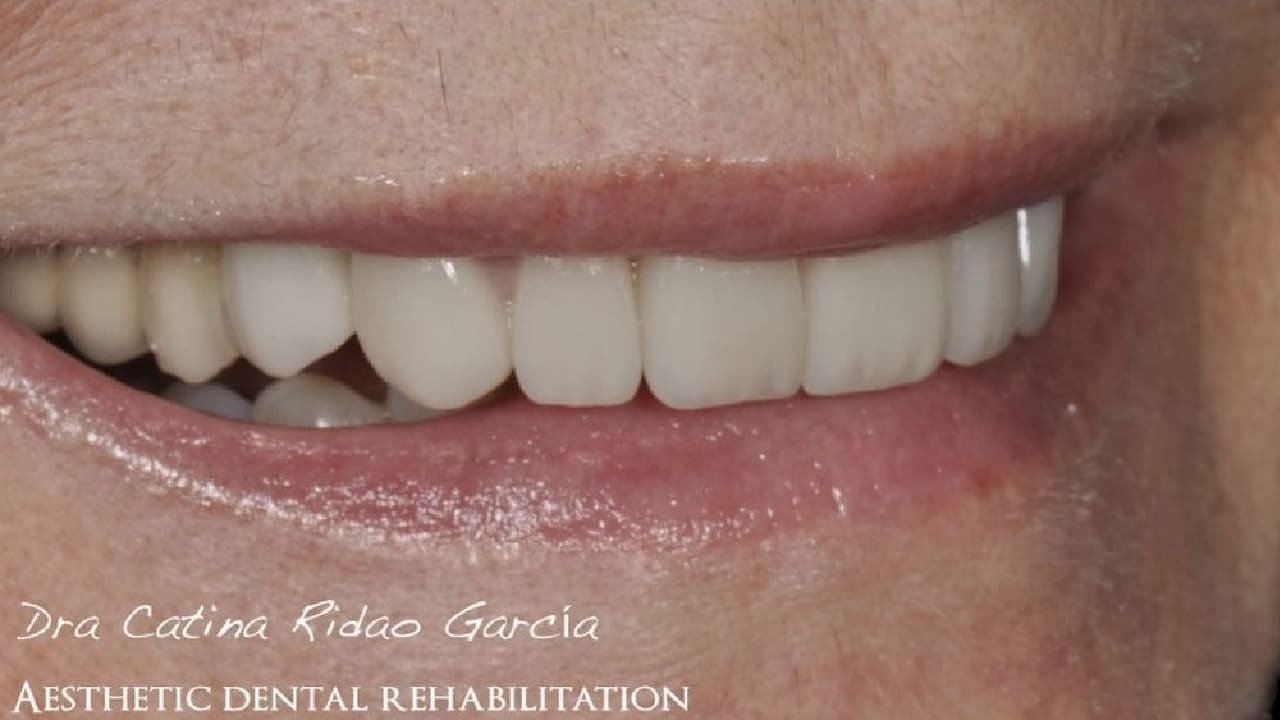

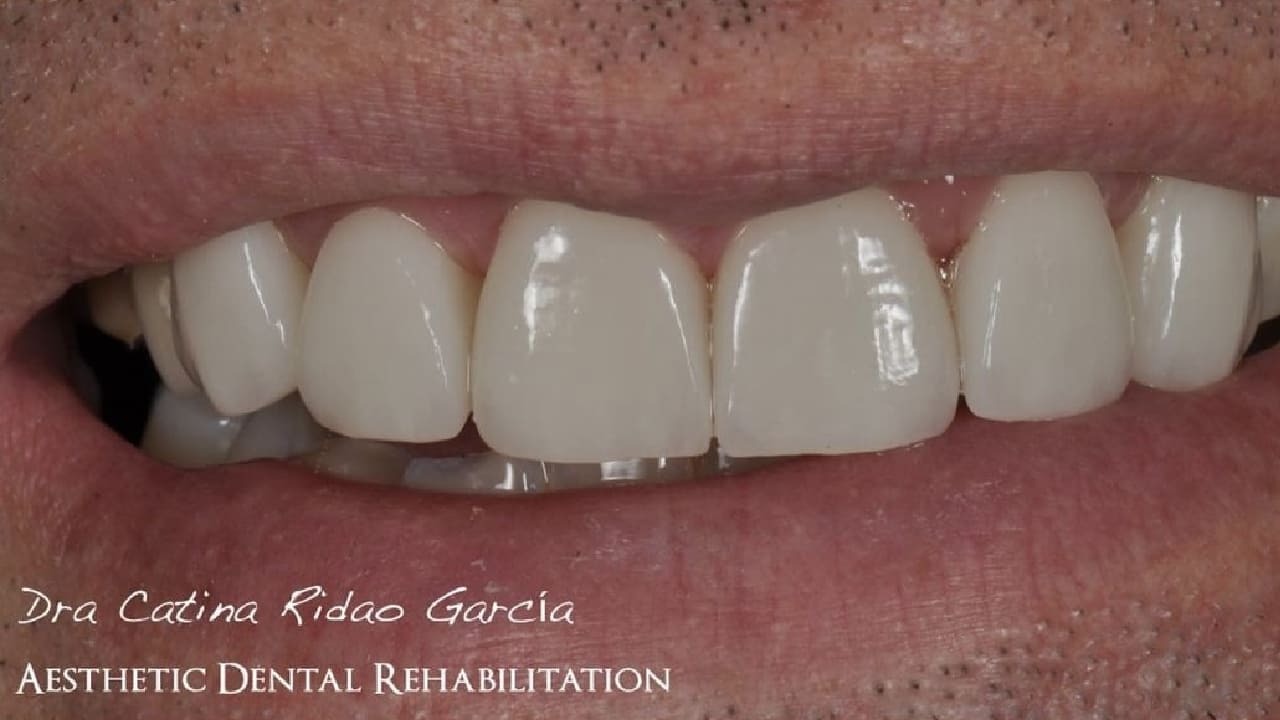
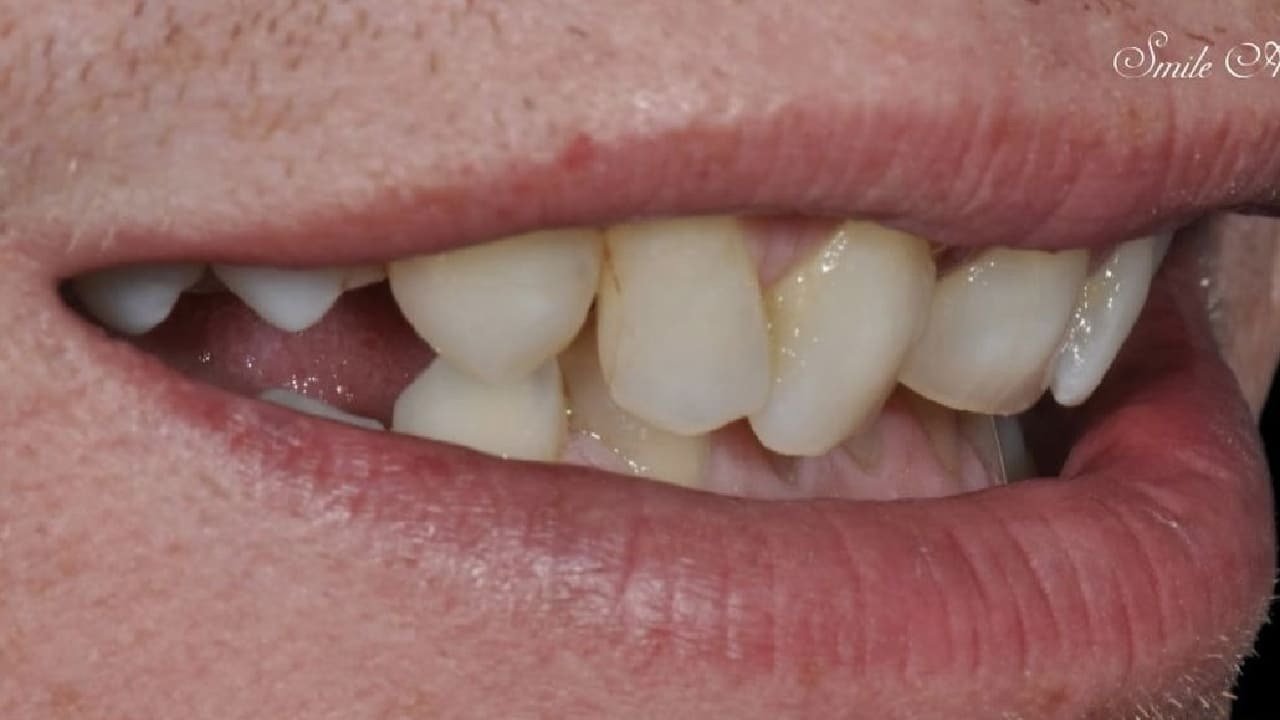
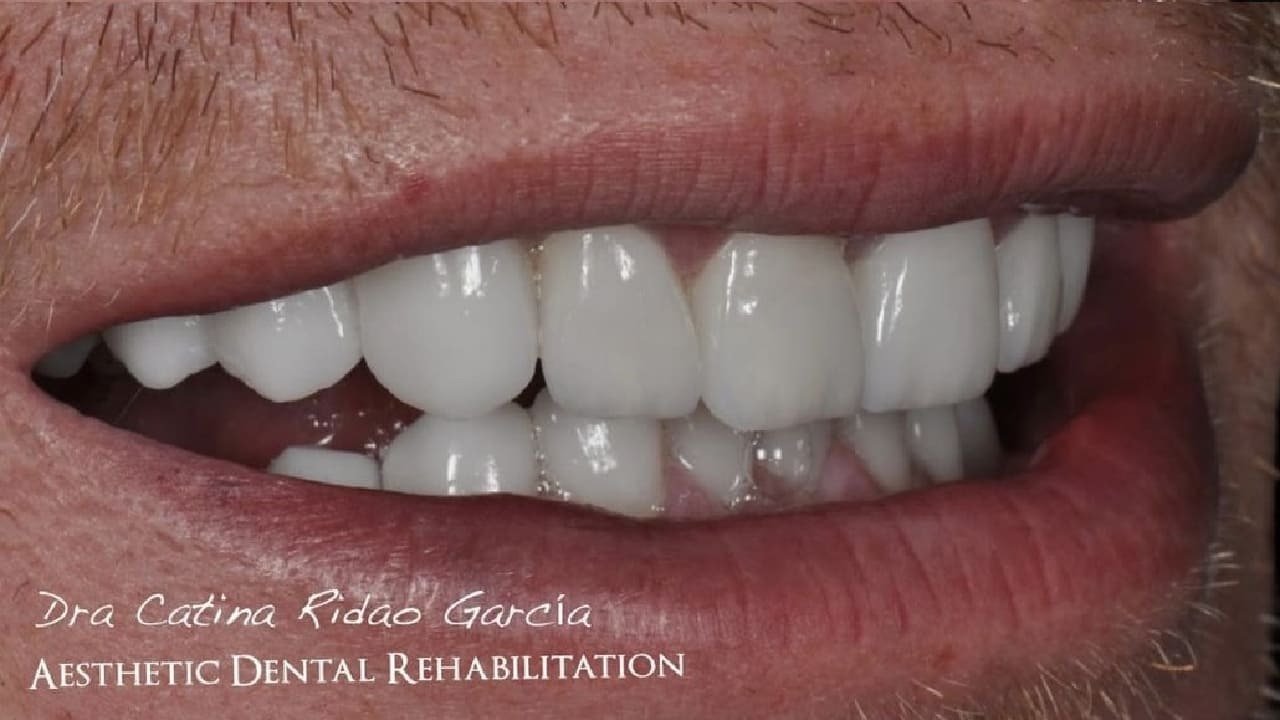

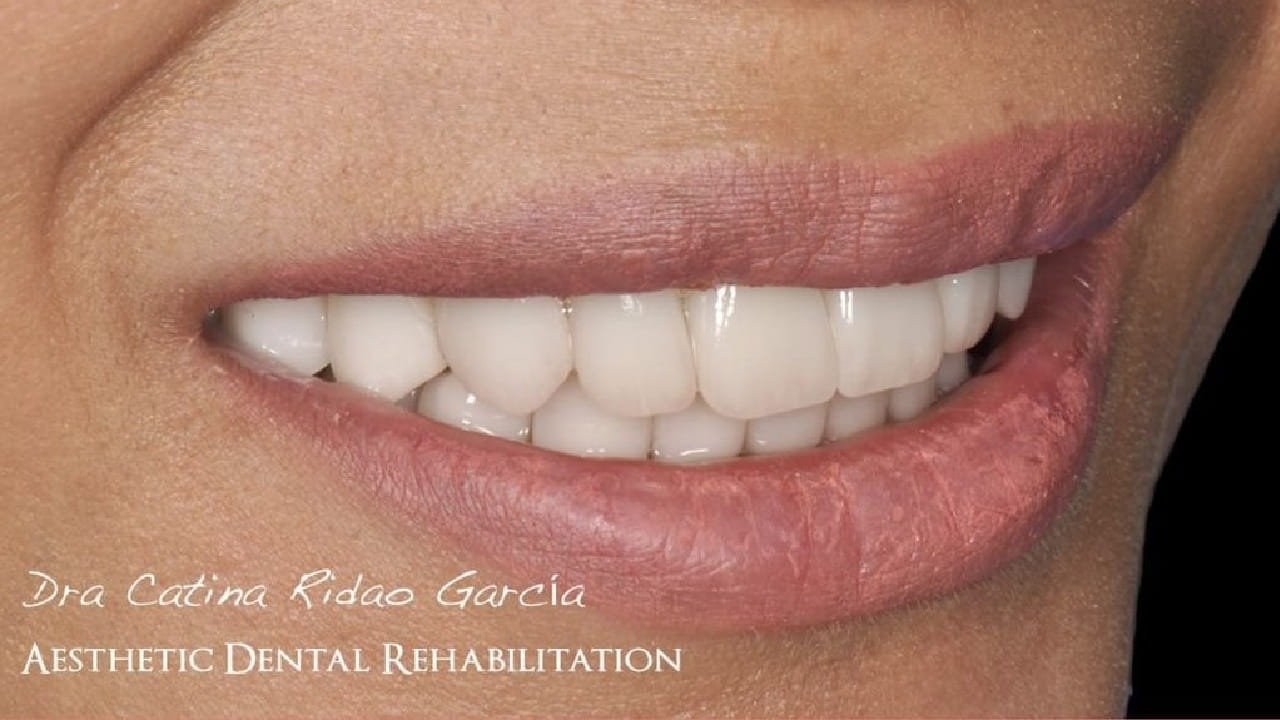
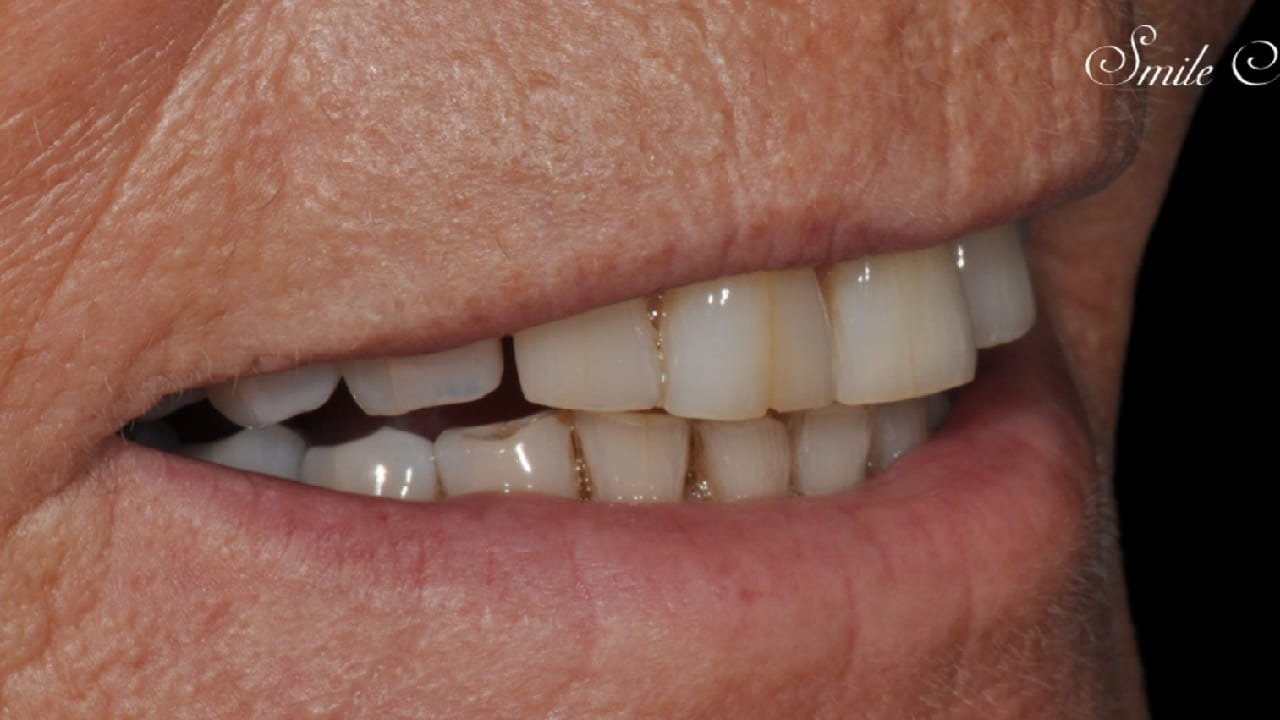
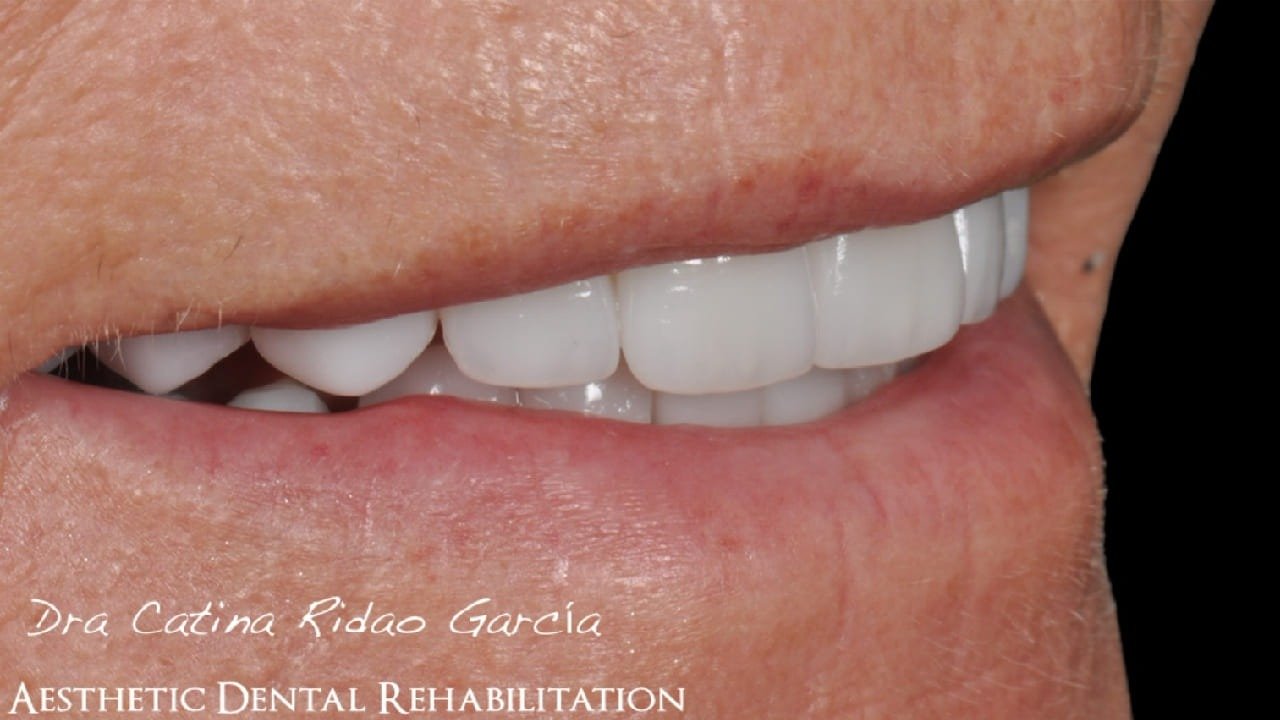
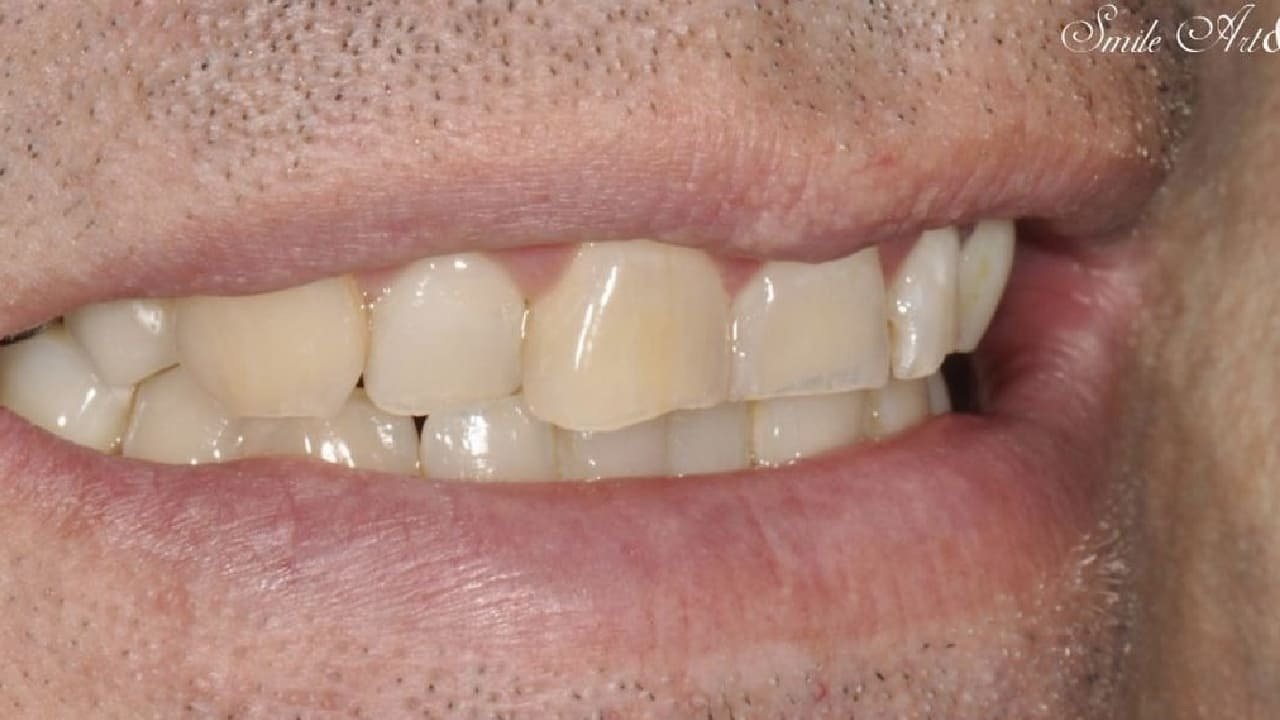
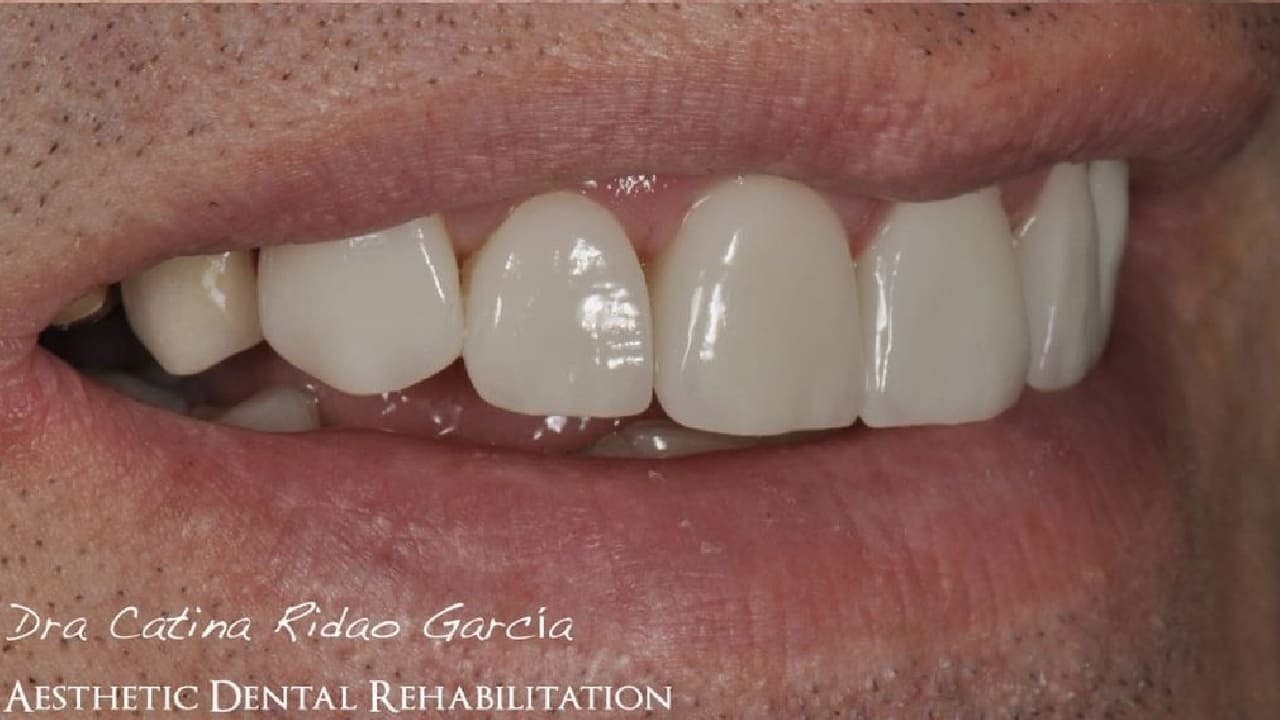

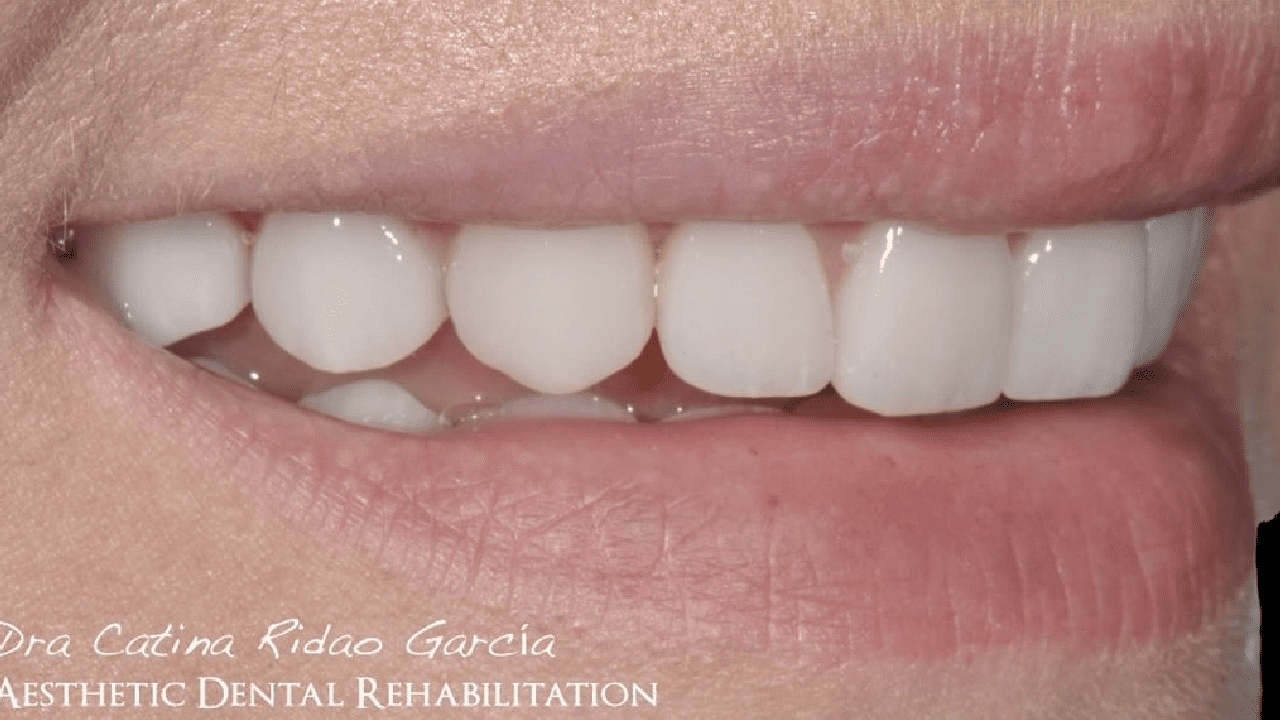
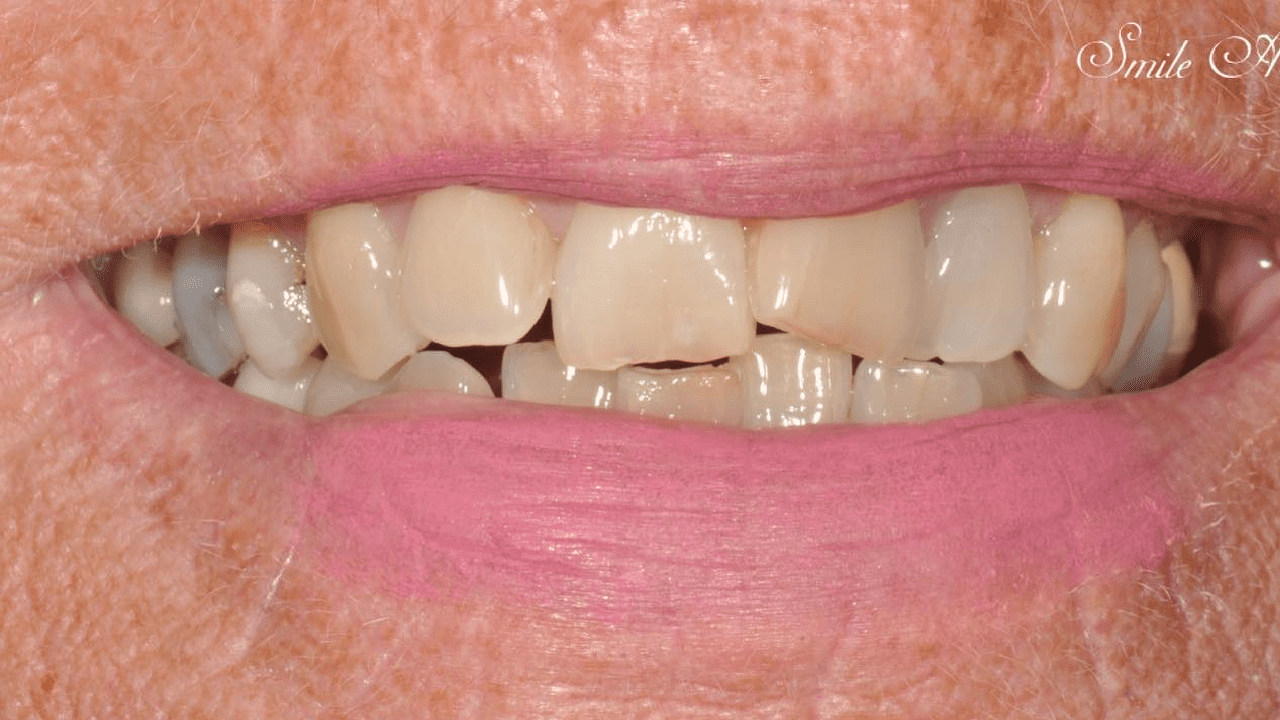
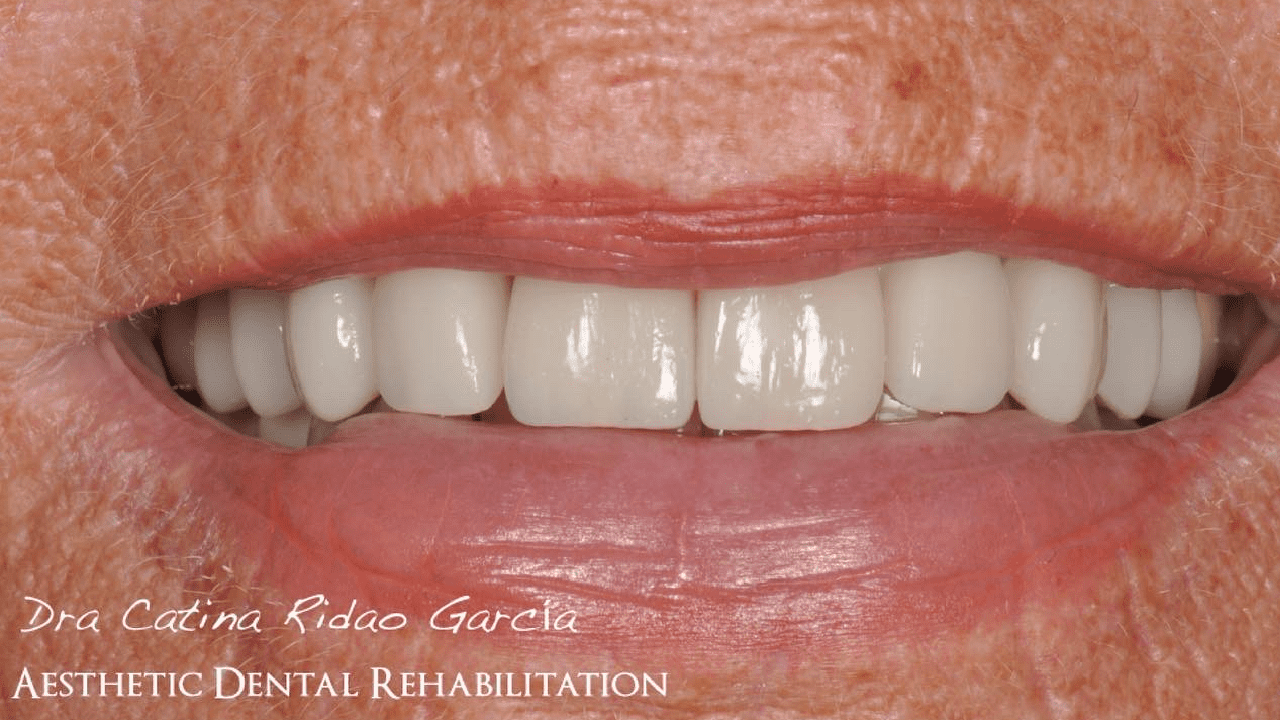
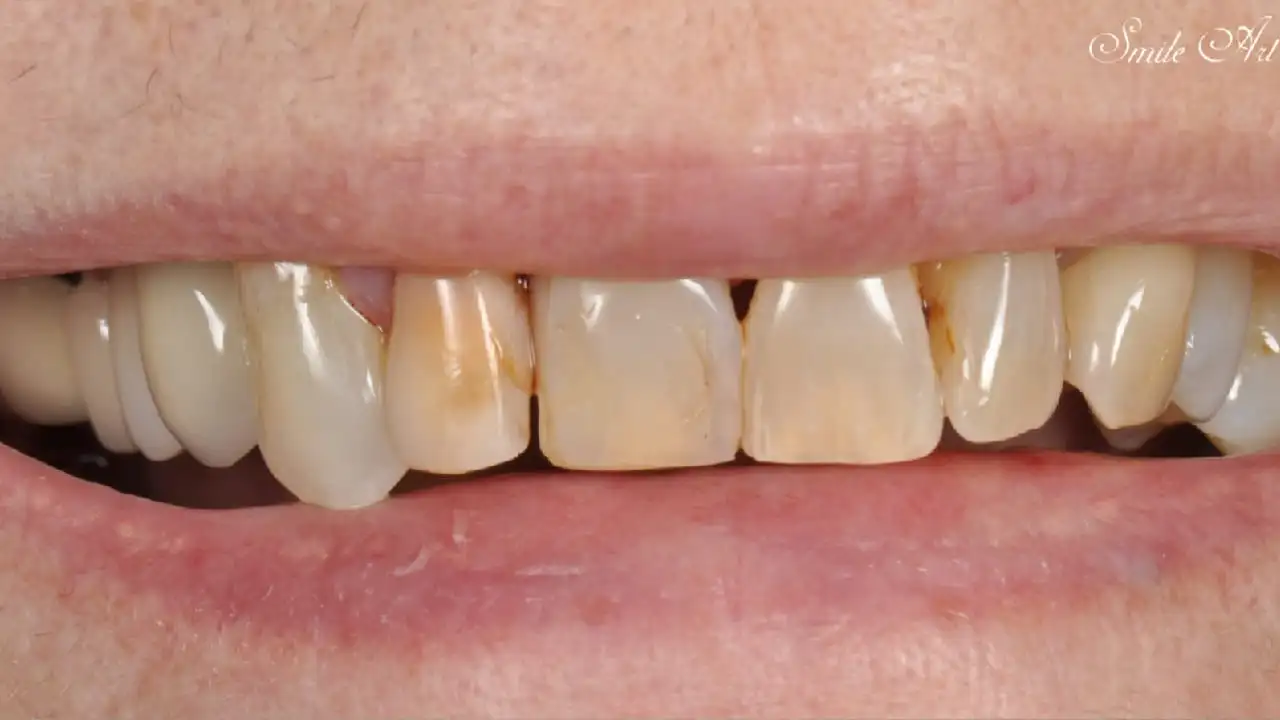
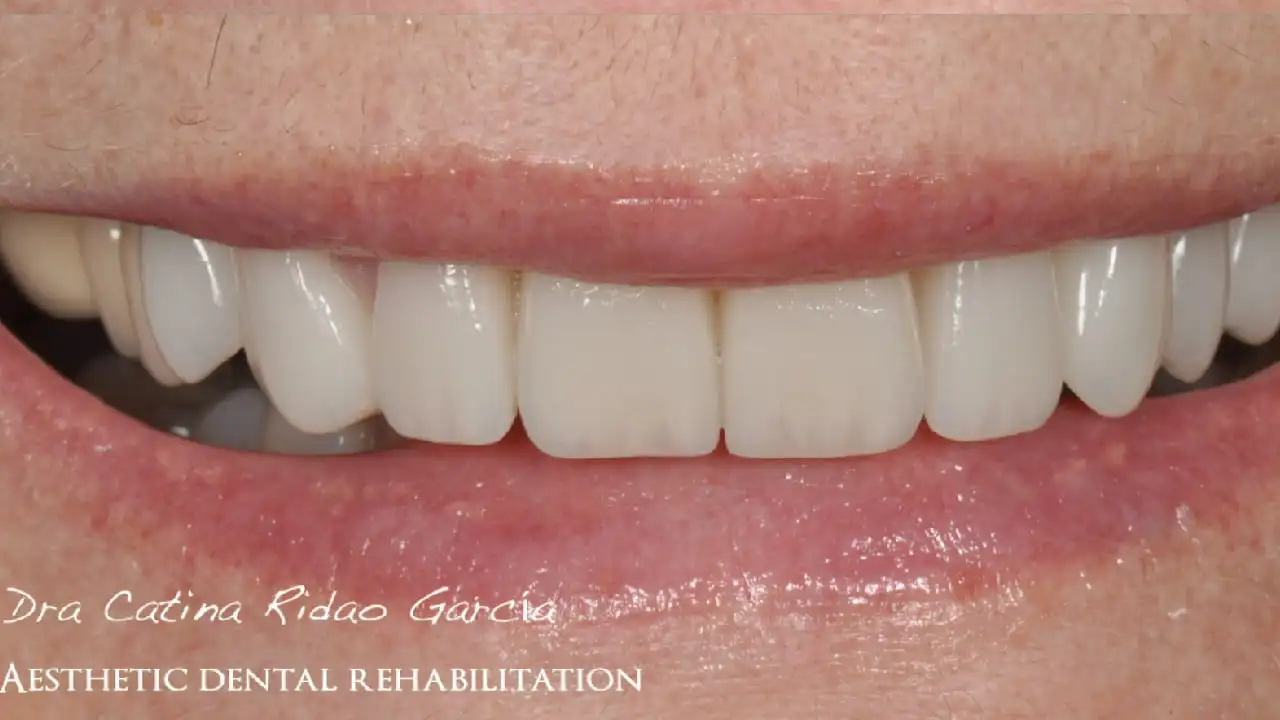
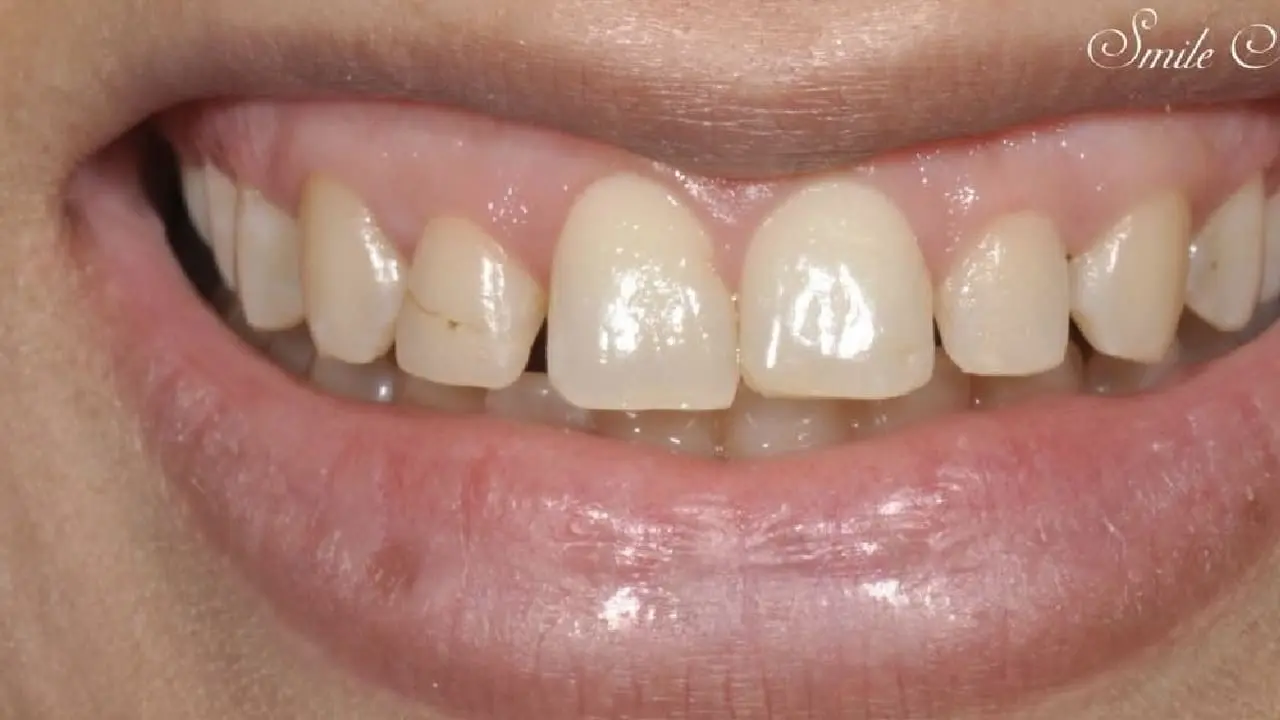
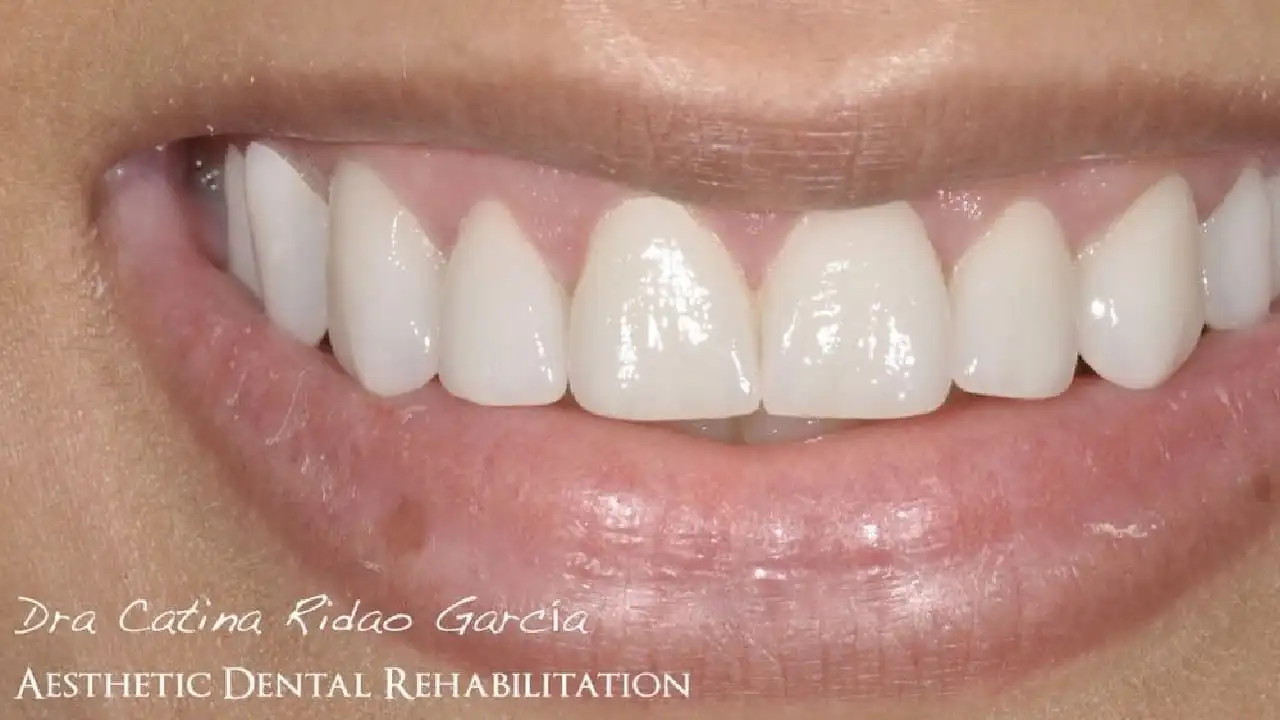
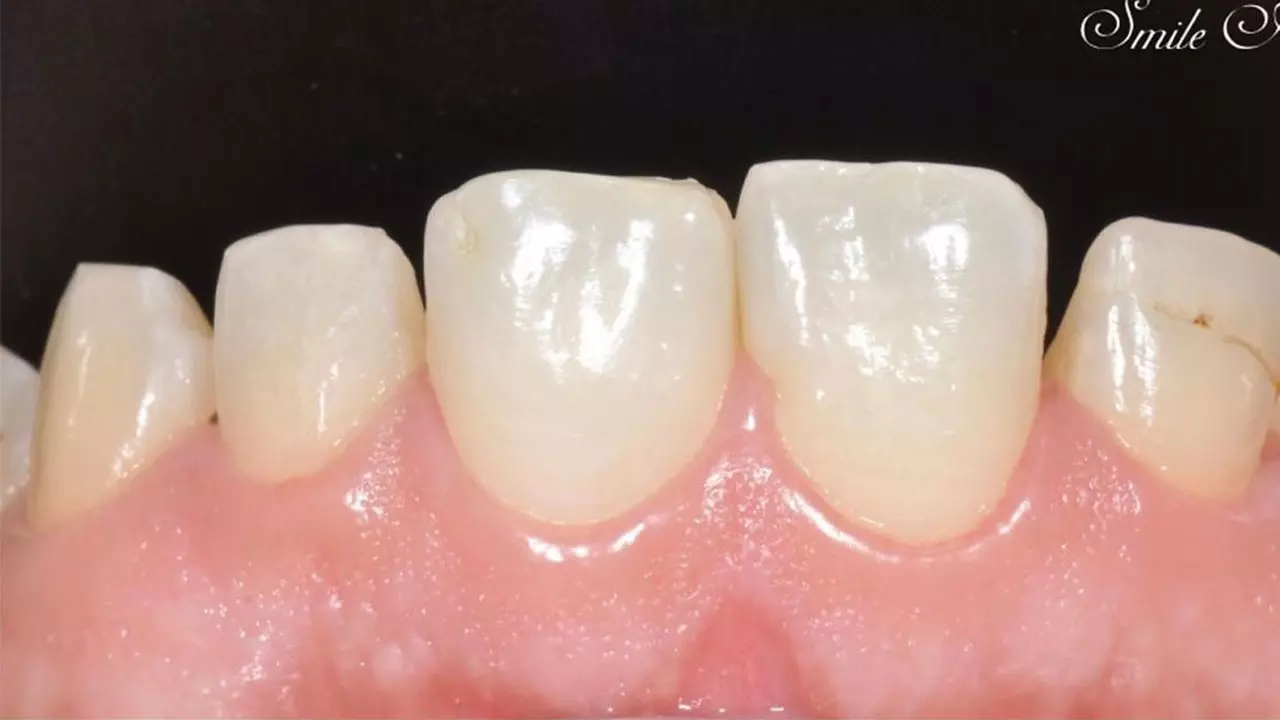
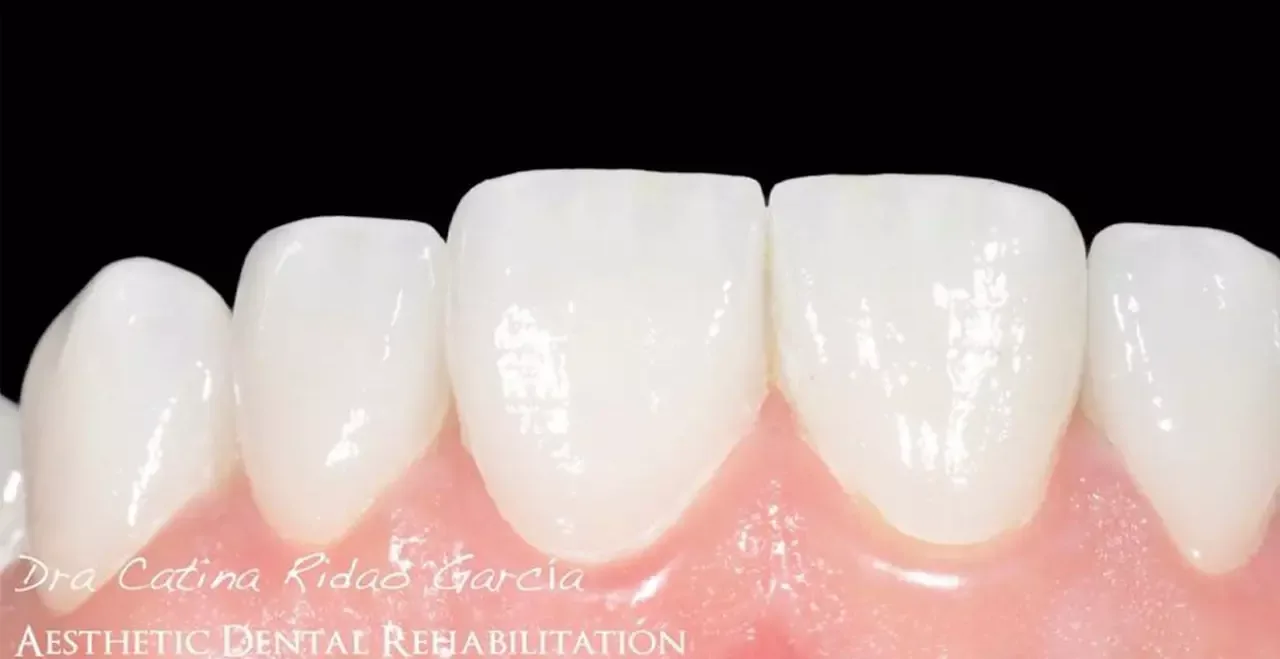
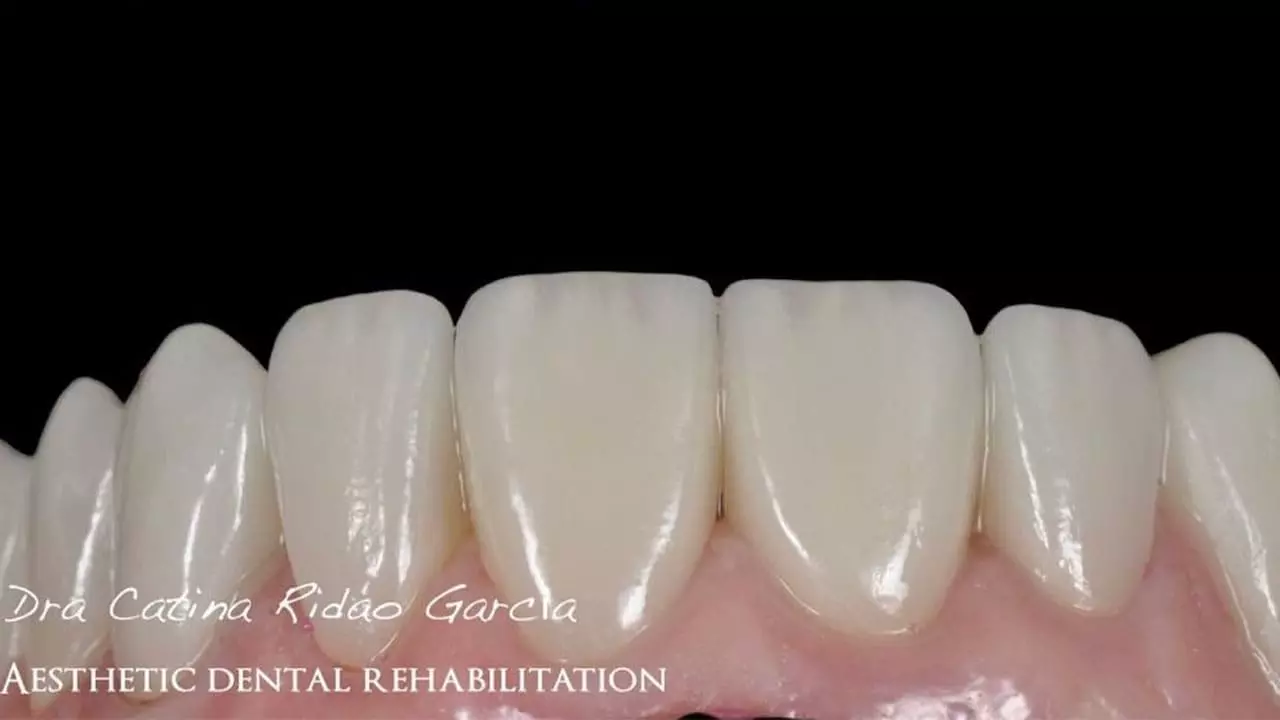
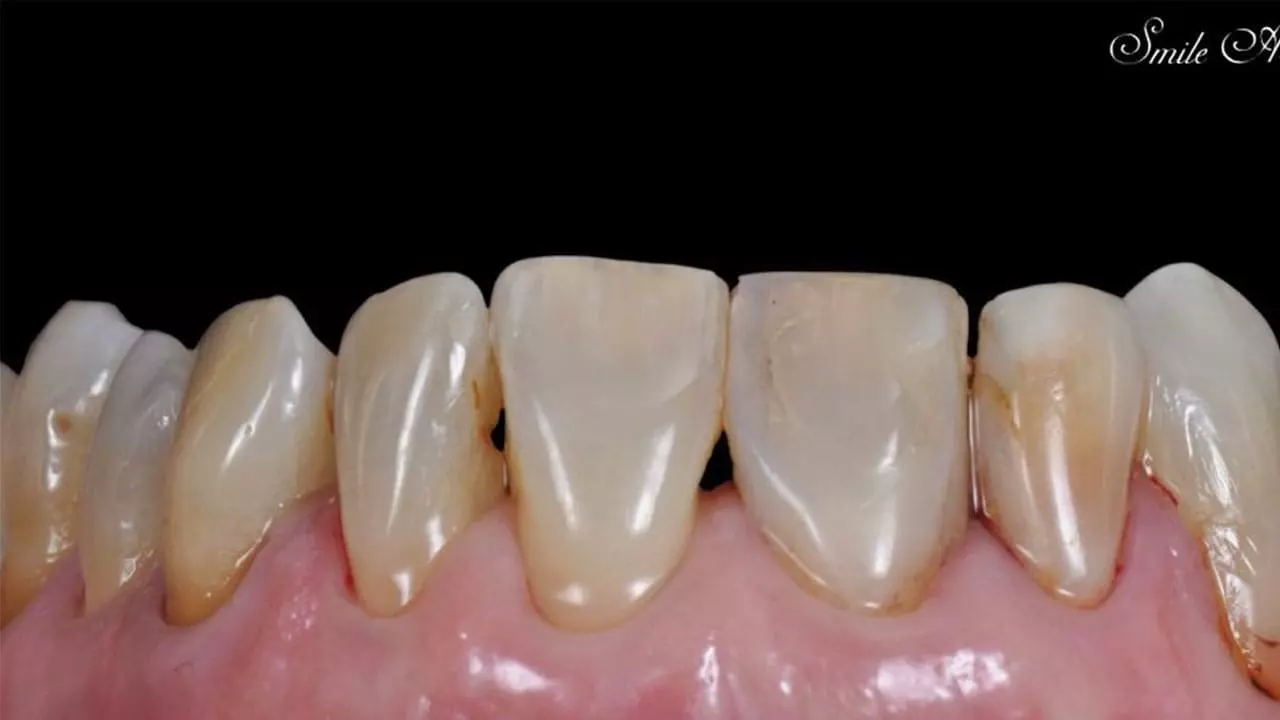
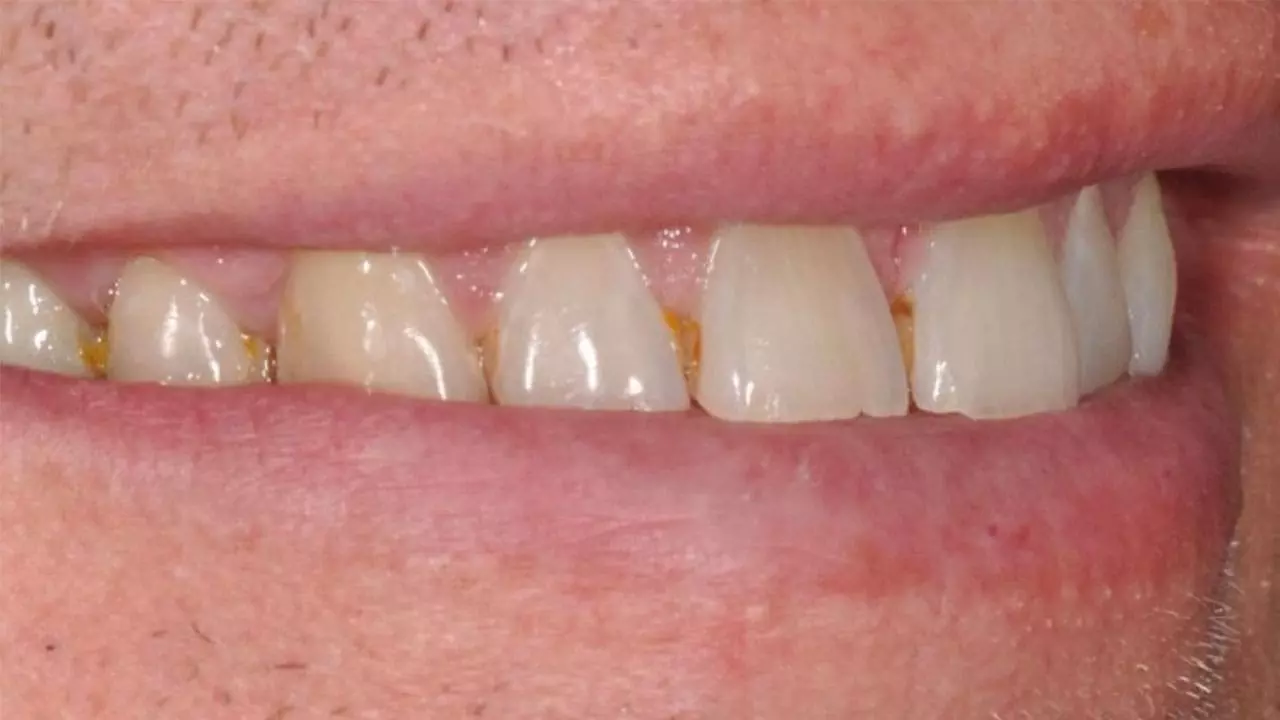
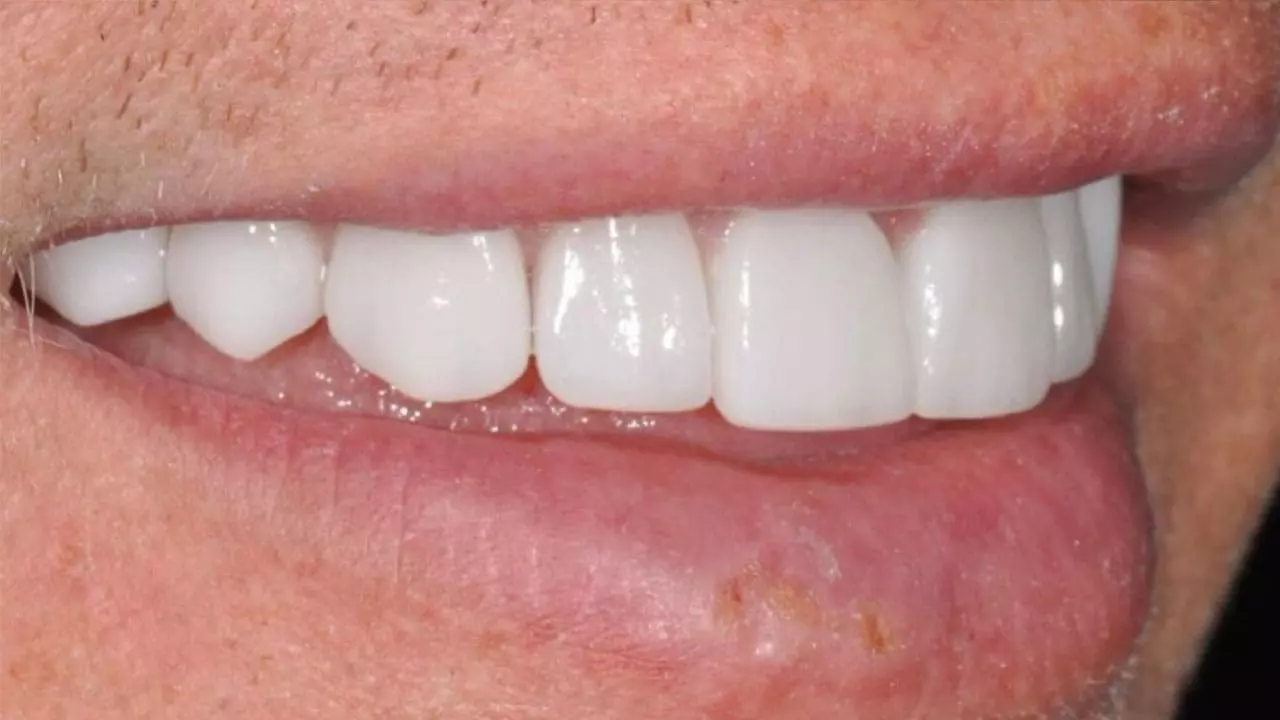



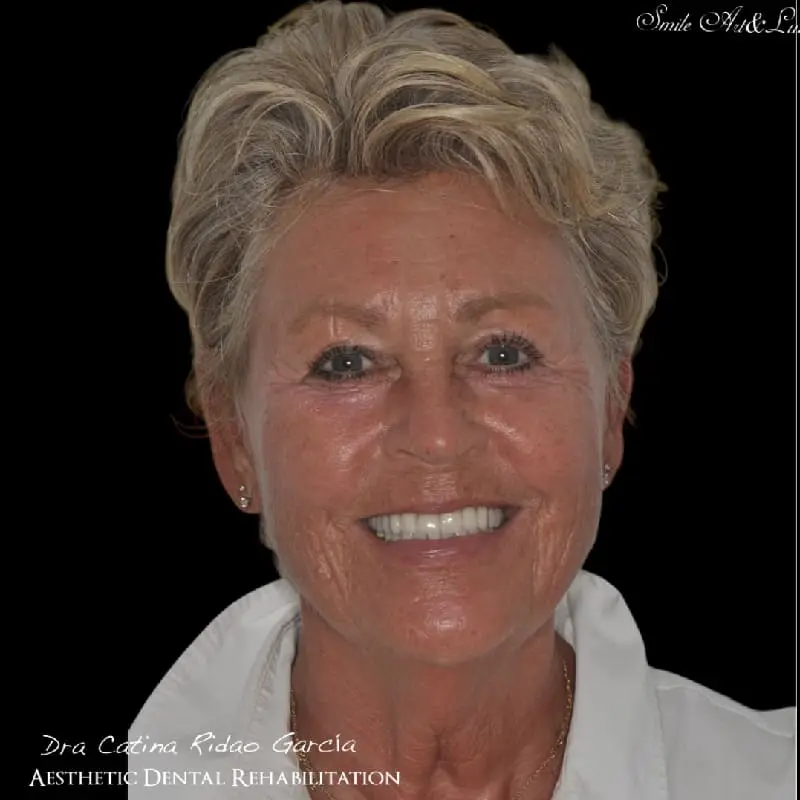


Veneers
Veneers are thin sheets of ceramic or composite that are placedn on the front of the tooth to modify shape, cracks, color, sometimes even correct small alignments. The use of one or another material gives rise to differentiated treatments.
The choice of material will depend on many factors, among others, the patient's habits, and the diagnosis will be determined after the first assessment, explaining in detail. beforehand the pros and cons of both treatments.
The ideal thing if you want to do a smile design is to do prior whitening, to have a good substrate when making the veneers, whether ceramic or composite. In both cases, the thin sheets present certain transparencies that allow let the light pass through and reflect in the final result.
PORCELAIN | CERAMICS.
Ceramic or porcelain veneers are very thin sheets (between 0.3 and 1.8 mm thick) custom-made in the laboratory that they join on the visible part of the tooth, in the external and front part.
This type of veneers constitutes a conservative treatment and requires preparation of the tooth on the front side (minimally invasive preparation).
It is necessary a prior smile study, personalized and appropriate for each patient. Photos, videos, and impressions are taken to evaluate the smile and facial features.
In a first appointment you can do a Digital Smile Design (DSD), SMILE DESIGN on the spot, which is a quick computer simulation, being able to choose the type and shape that you most want to give joint instructions to the laboratory. Regardless of this, the dentist and the laboratory will plan a personalized design to the face object of study and power make a more realistic simulation in the following quote.
In the second appointment, a MOCK UP will be carried out, which is the simulation of the smile design tested directly in the mouth, taking photos and evaluating with the patient all the overall details.
At the third appointment, the teeth will be prepared, impressions and a provisional placed until the final veneers are placed a week later.
In some cases the number of appointments, for example, for patients from abroad who are only traveling for a week. The laboratory would be contacted in advance and all appointments would be organized at that time..
Ceramic veneers are the most aesthetic material, they do not absorb stains and are completely intact over the years. Revisions are required, as they should be regardless of veneers. They are more expensive at first, but are more resistant and durable.
The two optimal ceramic types for porcelain veneers are feldspathic and lithium disilicate.
Comparison between composite and porcelain veneers
COMPOSITE VENEERS
- There is NO tooth preparation.
- Direct placement on the teeth in one/two sessions.
- If they break they can be easily repaired.
- More economical.
- It requires constant personal maintenance and at least 1-2 times a year in the clinic.
- Half life 3-5 years.
- Suitable for small corrections of alignment, color, fractures, wear, tooth rotation.
PORCELAIN
- Minimal tooth preparation.
- They are made in the laboratory.
- Four/five sessions are required.
- Possibility of doing it in just one week only if planned in advance (for patients from abroad).
- It is very difficult for them to fracture if you have appropriate habits.
- Maintenance is regular checkups at the dentist.
- Average life 10-15 years.
- Suitable for correcting more serious aesthetic discrepancies.
- They do not absorb stains. Its polish is greater than any natural tooth.
- Types: lithium disilicate (Emax) and feldspathic.
- Suitable for smokers.













